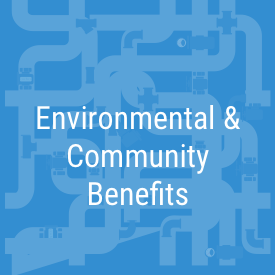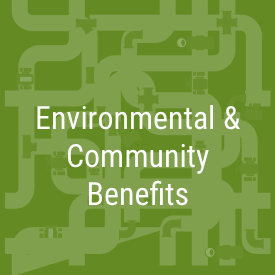The Pond A4 Resilient Habitat Restoration Project reflects Valley Water’s commitment to environmental stewardship. The project aims to enhance and enlarge pond-upland ecotone habitat along Pond A4's southern shoreline in Sunnyvale. By beneficially reusing sediment from Valley Water's Stream Maintenance Program and other sources that would otherwise be disposed of in landfills, the project intends to create a shallow-water shorebird foraging ecotone bench slightly below the existing ordinary high water mark.
Currently, Pond A4 provides limited foraging habitat for shorebirds, as water depths are suitable for use only in a very narrow band along the immediate shoreline and remnant internal berm features. As a result, this pond does not support large numbers of shorebirds. The project will beneficially reuse stream sediment to restore regionally scarce shorebird foraging habitat.
For more project information, please contact Judy Nam at [email protected] or 408) 630-2747.








Valley Water plans to conduct a geotechnical investigation along approximately 1 mile of the existing levee that borders Pond A4 and the Sunnyvale East Channel in Sunnyvale. In the figure to the right, please see the orange highlighted temporary trail work impact area. The proposed project site is located along the southern berm of Pond A4, extending along the Bay Trail north of the Sunnyvale Wastewater Treatment Plant and ending at the intersection of the western Sunnyvale East Channel levee and Caribbean Drive. The purpose of the subsurface investigation is to determine the soil and substrate conditions of the existing berm. The proposed geotechnical investigation would consist of exploring up to 4 locations, including the collection of two borings and two cone penetration tests. The proposed boring activities would include drilling approximately 50 to 75 feet below the ground surface at each location. In accordance with Valley Water’s standards, all borings would be backfilled with cement grout. Drilling spoils would be hauled off-site for proper disposal.
There are no planned trail closures. However, there will be heavy equipment present conducting drilling activities on September 14, 25, and 26, 2023.
The Pond A4 Resilient Habitat Restoration Project offers a multitude of benefits that positively impact the environment and the community. These benefits include:
- Restoration of approximately 45 acres of shorebird and salt marsh harvest mouse habitat
- Enhancement of approximately 6,000 ft of existing Bay Trail by increasing the amount of biological activity adjacent to the existing Bay Trail, increasing the natural diversity of the viewshed, and providing interpretative signs.
The project’s ecotone bench will be designed to maximize habitat value given the existing water surface elevations of the Pond A4. Because the pond has limited hydraulic connectivity with nearby water bodies, it is insulated from the effects of sea level rise and water surface levels are not expected to change significantly during the project period.
Pond A4 is a roughly 300-acre former salt production pond nestled within Sunnyvale's southern San Francisco Bay shoreline. Owned by Valley Water, its boundaries are defined by Guadalupe Slough to the north and east, the Moffett Channel to the west (which converges with Guadalupe Slough), and to the south by the Sunnyvale Water Pollution Control Plant, Sunnyvale-Mountain View Recovery and Transfer Station, a closed sanitary landfill, and Sunnyvale Baylands Park. An earthen berm tracing a length of about 6,000 feet accommodates a segment of the Bay Trail at its southern edge.
Historically, the South San Francisco Bay, including Pond A4, was originally comprised of tidal marsh. Pond A4 underwent transformative shifts in the early 1900s when dredging and diking operations converted thousands of acres in the region to expansive ponds dedicated to salt production. In the year 2000, Valley Water acquired Pond A4 from the Cargill Corporation. Today, Pond A4 is a roughly 300-acre diked open water pond with limited hydrologic exchange with nearby Pond A3W. This results in a very muted tidal regime; water surface levels vary seasonally by about two feet. Pond bottom elevations are several feet below the water surface elevations. As a result, water depths are too deep for shorebird foraging and very little emergent vegetation grows in the pond. In its current condition, the Pond A4 has minimal biologic productivity. Against this backdrop, the Pond A4 Resilient Habitat Restoration RHR project emerges, envisioning a transformation with the creation of a shallow water ecotone bench spanning approximately 45 acres along the pond's southern margin.





